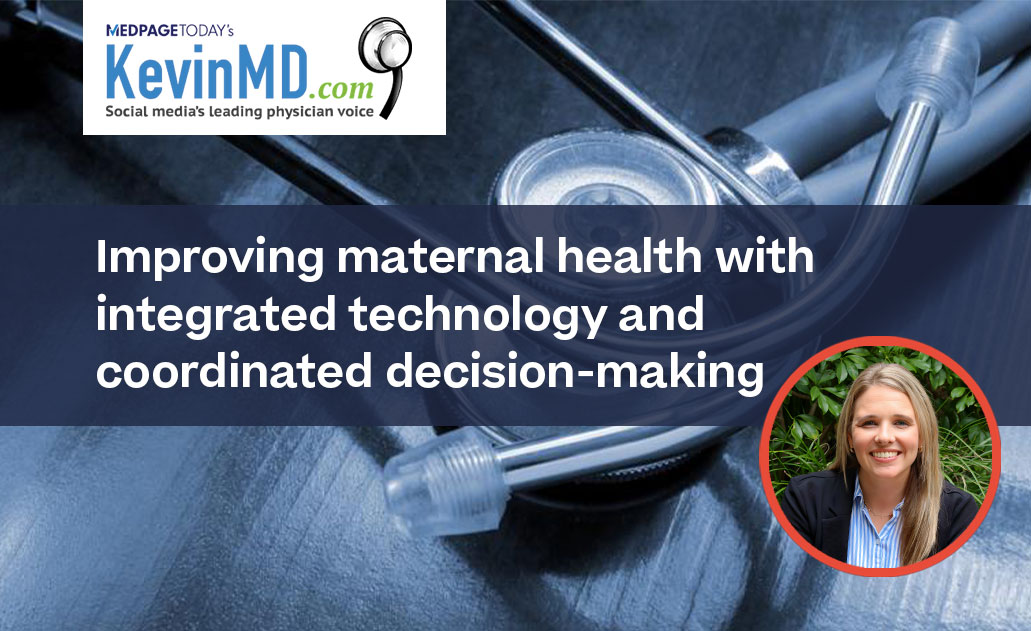May 24th, 2024 / News
Improving maternal health with integrated technology and coordinated decision-making

The U.S. infant mortality rate, children who die under one year of age, rose to its highest rate in two decades in 2022, up about 3 percent to 5.6 infant deaths per 1,000 live births.
At the same time, the nation’s neonatal mortality rate, infants who die in less than 28 days, increased by 3 percent from 3.49 to 3.58, and the post-neonatal mortality rate, infants who die between 28 days through 11 months, by 4 percent, from 1.95 to 2.02, according to the U.S. Centers for Disease Control and Prevention.
Specifically, because obstetrical care is a highly specialized multidisciplinary area, it is essential that all clinicians on a patient’s care team are granted timely and convenient access to the same patient data, such as prenatal history, labs, and vitals. The perinatal care environment presents the unique challenge of caring for two patients simultaneously: the mother and the unborn child. To provide improved birth outcomes, concurrent and accurate monitoring of both patients in real-time is critical.
For example, if a clinician needs quick, at-a-glance information about a patient, whether the fetal strip or electronic health record (EHR), the information must be consistent throughout the system and visible to all team members. In this regard, clinicians are looking for integrated technology to help support clinical workflows, drive adherence to evidence-based standards of care, and improve coordinated decision-making.
The challenges facing obstetrics caregivers
Though exacerbated by the COVID-19 pandemic, burnout and staffing shortages have created hardships across all areas of health care for years, affecting obstetrics nurses in particular. While obstetrics can be a wonderful field, it is also often a stressful environment in which to work. With COVID-era restrictions on visitors and caregivers such as doulas, the extra burden typically fell on obstetrics nurses, who frequently went above and beyond during the pandemic.
Add to that worker shortages, and existing staff have increasingly felt stretched thin, which has worsened the physical and mental stress affecting many obstetrics caregivers. Factor in the emotional burden associated with the work, such as attempting to help patients through complicated pregnancies and experiencing the inevitable losses that are associated with rising morbidity rates, and recent years have exacted a heavy toll on workers in the discipline.
With more efficient, automated documentation systems, clinicians can spend more time in front of patients, boosting patient engagement and improving outcomes. With more engaged patients, clinicians can have more productive and satisfying interactions with patients, enhancing job satisfaction and improving health systems’ staff retention.
The clinical, financial, and operational benefits of integrated technology
Among the major advantages of integrated technology that provides all care team members with the same holistic view of each patient is the ability for clinicians to monitor a population of patients, such as women in labor, to reduce adverse events. In addition to tools like centralized fetal surveillance, patients’ EHR data can be integrated into a dashboard that enables clinicians to simultaneously monitor multiple patients. Automated algorithms can incorporate data into the dashboard from maternal early warning scores as well as analyze a multitude of patient data, such as labs, vital signs, and patient assessments, to identify potential deterioration and alert staff, driving earlier intervention.
In addition, clinicians can drill down to view specific patient details, including the fetal strip, making it possible to assess patients in one view. Allowing clinicians to also access these tools on mobile devices widens the reach of integration and supports even more members of the care team. When clinical teams have the data they need at their fingertips, patients receive the most appropriate care and achieve better outcomes.
Integrated data and technology also support ongoing quality improvement initiatives that are important to clinicians, enabling them to continuously review care delivery and outcomes to assess best practices. For example, data can be identified to support scoring and automated algorithms to assess risk, care protocols, and more. These insights can be rapidly implemented to support evolving best practices, improved care protocols that prevent poor outcomes, and strengthened value-based care delivery, leading to enhanced patient experiences.
In addition to the clinical benefits, integrated technology offers advantages when applied to routine financial and administrative processes. For example, with data such as patient demographics, insurance, and clinical documentation readily available, providers can improve the accuracy and efficiency of coding, billing, and reimbursement. Further, access to integrated data enables providers to deliver more transparency to patients regarding insurance coverage and out-of-pocket costs, improving patient satisfaction by setting proper expectations.
With most of the nation’s major maternity statistics trending downward, now is a critical time for investment in obstetrics care. With integrated technology that delivers a consistent, holistic view of each patient, clinicians can relieve staff burnout while improving patient outcomes as well as financial and operational performance.
Whitney Weighall is a nurse executive.
